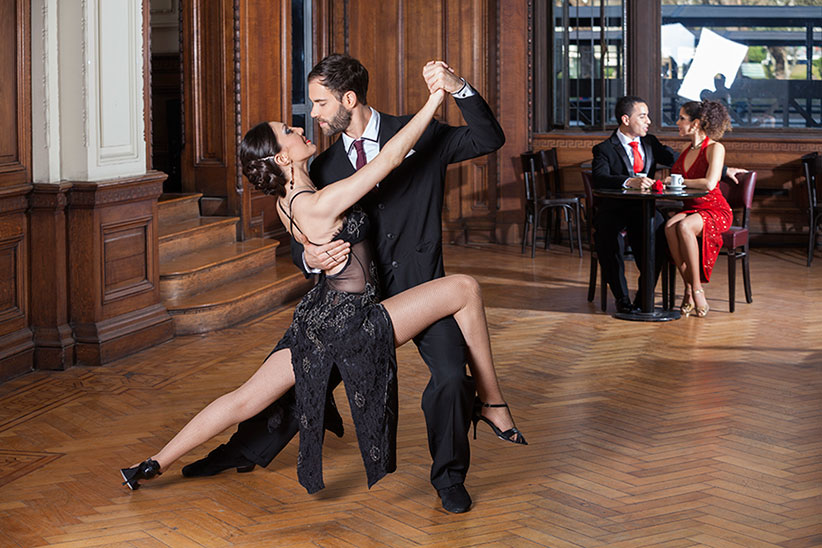By Dardo Galleto —
You would be hard-pressed to find someone who hasn’t heard of or seen the tango. That shouldn’t be surprising because the tango dance is a growing worldwide dance phenomenon that traces its roots back almost 150 years to South America. Since its beginning, it has assumed multiple images and functions.
In South America, particularly in Buenos Aires, the tango is an institution, something akin to a national treasure, possession or even religion. In Europe and North America, it is often seen as an esoteric, exotic, sensual and mysterious ritual. Of course, in the hands of many filmmakers, playwrights and entertainers, it also can be a comic prop. Ultimately, the tango is a growingly popular phenomenon, which has penetrated increasingly into demographic groups that have never been seriously exposed to the dance.
It is all these things. But it is much more. The dance itself is a precise, demanding, social, highly physical, intellectually stimulating and spiritual exercise. A mix of sport and art, the tango requires participants to attain a level of body awareness necessary to discover their core—their spine and periphery. Self-discovery is a prerequisite to integrating and manipulating a person’s body more effectively and becoming a successful tango dancer.
Grow your self-awareness and physical and mental health benefits will follow that extend well beyond the dance floor. Think about it. The tango, as almost everyone knows, demands dancing very closely with your partner. Only those who really understand themselves can dance well with someone else.
Ultimately, the pathway to self-discovery isn’t in the tango’s steps. Anyone can mimic dance steps. Rather, it is in the dance’s technique that we discover the concept and understanding of one’s self. There are several tango dance health benefits. Building self-awareness starts with discovering your physical core, which is made up the spine and the periphery of the torso.
Enhancing and understanding the networks within your body helps ground you, supporting you vertically from head to foot through your core. This awareness, in turn, makes you more fluid, and develops your understanding of how the body works, allowing you to manipulate it more effectively.
Strengthening your physical network also helps build networks in your brain, which then makes it easier for you to detect movement patterns and learn new ones. In effect, your brain becomes more active.
The benefits don’t stop there. The entire process generates energy that moves in a spiral through your body in both a horizontal and vertical flow. Knowing how to manage it can help build posture. It can also help us understand our emotional and mental energy and keep them in balance.
Embracing the tango isn’t a panacea for all your problems and challenges. But it has far reaching physical and emotional benefits make it more than a simple dance routine.

About Dardo Galletto
Dardo Galletto is one of New York’s leading tango dancers and the author of a unique tango teaching technique that combines elements of different dance disciplines while emphasizing the need to understand personal energy flow. Born in Cordoba, Argentina, Mr. Galletto began acting at 12 and only began studying dance to supplement his acting. Gradually he recognized dance was his true passion and began to train intensively. He is a graduate of Teatro General San Martín, a prestigious dance school in Buenos Aires, where he studied ballet, modern jazz and composition. Mr. Galletto also studied at Teatro Colón. He was a member of the world-renowned Ballet Argentino before moving to the U.S. in 2001 when he began performing with several modern and ballet companies. He is also the founder of two dance studios and programs.
Please visit http://dardogallettostudios.com or http://www.gallettodance.com to learn more.











